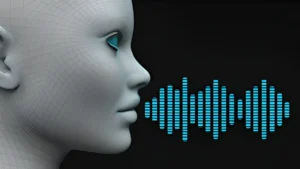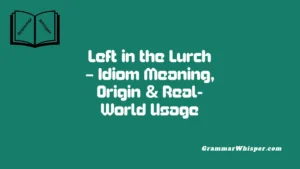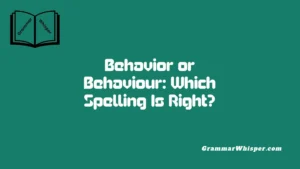There was a time when I typed “It’s to early” into texts and emails without a second guess. It looked fine. It sounded fine. But it wasn’t. That one missing “o” changes everything. The distinction between to and too can feel trivial, yet it carries weight in both grammar and everyday communication. If you’re saying something’s happening before the proper time, the word you want is too, as in “It’s too early to decide.” That extra o signals excess – too cold, too loud, too early. Getting it wrong? You risk sounding less credible, especially in formal settings like emails, resumes, or academic writing.
This mix-up usually stems from homophones – words that sound identical but have very different meanings. If you’re in a rush, it’s easy to trip over them. But there’s a quick trick: use too when you’re describing an amount or intensity. Saying “I’m too tired to work” hits the mark because you’re emphasizing an excessive feeling. On the other hand, to functions more like a path – it’s about movement or direction, like “I’m going to the store.” Mastering this distinction improves your fluency in English, sharpens your grasp on grammatical correctness, and boosts your credibility as a writer. It’s a subtle shift, but it makes your writing clearer and more confident – and that’s never too early.
Deciphering “To” vs. “Too” – The Core Confusion
English homophones often cause confusion. To and too sound identical but perform very different jobs.
- To serves as a preposition (“I walk to school”) or an infinitive marker (“to sleep”).
- Too acts as an adverb, meaning excessively (“too hot”) or also (“me too”).
Choosing correctly sharpens tone and clarity. Think of too as adding emphasis or inclusivity, while to connects or introduces action.
Understanding Intensifiers: The Role of “Too”
When you say “too early,” too amplifies early – expressing excess or undesirability.
- Excessive tone: “Your coffee’s too sweet.”
- Inclusive tone: “I’m coming too.”
Too contrasts with other intensifiers like very or quite, but uses emotional emphasis. Common expressions:
- “Too late”
- “Too many options”
- “Too good to be true”
Examples in Context: When to Use “Too Early”
Writing clarity comes from real examples that resonate. Here’s a practical breakdown:
Everyday:
- It’s too early to grab lunch.
- She wrote too many notes.
Workplace:
- Pressing deadlines means it’s too early for that decision.
- Colleague added herself too quickly.
Academic:
- The assignment was too complex – rewrites needed.
- Distribution started too early in the study.
These examples show too either intensifies or includes – perfectly fitting its adverbial roles.
Mistakes to Avoid: Remembering the Difference
Check your writing against these common pitfalls:
| Mistake | Why it’s wrong | Rail against it |
| To early | To isn’t an intensifier | Use Too early |
| Too bed? | Mixing up infinitive form | Use To bed (go to bed) |
| Me to at party | Wrong part of speech mix-up | Use Me too |
Memory tip: Too has an extra o – just like it adds emphasis. Whenever you aim for emphasis or inclusion, think too.
The Nuances of English Prepositions: Using “To” Correctly
As a preposition, to connects a verb or action to a target.
- Deliver this to her desk.
- Ready to present?
As an infinitive marker, it pairs with base verbs:
- I plan to travel.
- She hopes to finish soon.
Note: Confusing these leads to phrases like to early, which misplaces a preposition or loses its adverbial function.
Quick Grammar Rule: How to Decide Between “To” and “Too”
Try this four-step check:
- Identify the role (action/connection vs. emphasis/inclusion).
- Substitute also or excessively:
- If it works, use too.
- Otherwise, to is safe.
- Look for prepositions or infinitives.
- Use the too double o trick.
This builds accuracy without second-guessing your work.
Expert Insights: Grammar Authorities Weigh In
Language authorities consistently underline this distinction:
- Chicago Manual of Style emphasizes too as intensity, to for direction/infinitive.
- Grammar Girl (Mignon Fogarty) uses humor to reinforce the too vs. to difference.
- Oxford English Grammar demonstrates error frequency in learner corpora.
Their collective advice: reinforce clarity and avoid homophone errors.
Case Study: A Real-World Email Misstep
Scenario: Jamie wrote to a client: “It’s to early to finalize the report.”
Result: Client noticed the typo before reading details. Jamie’s credibility took a hit.
Correction: Rewriting: “It’s too early to finalize the report” – Adds emphasis and avoids confusion.
Lesson: Homophones matter in business. One mistyped o can change meaning and tone.
Final Thughts
- To serves as a preposition or part of the infinitive form.
- Too emphasizes or includes.
- Use substitution or the double-o trick to confirm usage.
- Homophones matter in professional communication – one o can shift tone entirely.
FAQs
Can “to early” ever be correct?
No. To doesn’t modify adjectives. Always use too when emphasizing early.
Why do people confuse “too” and “to”?
They sound identical (homophones), and people often default to to because it’s more familiar.
Is it okay to use “too” in formal writing?
Absolutely. Just ensure correct usage. Many formal styles, including legal and academic writing, use too for emphasis.
What quick trick helps me get it right?
Replace the word with “also” or “excessively.” If it works, use too. If it doesn’t, stick with to.
What tools can catch this error?
Use Grammarly, Hemingway, or Microsoft Editor. Also, read your prose aloud – it helps spot homophone errors your eyes skip.











